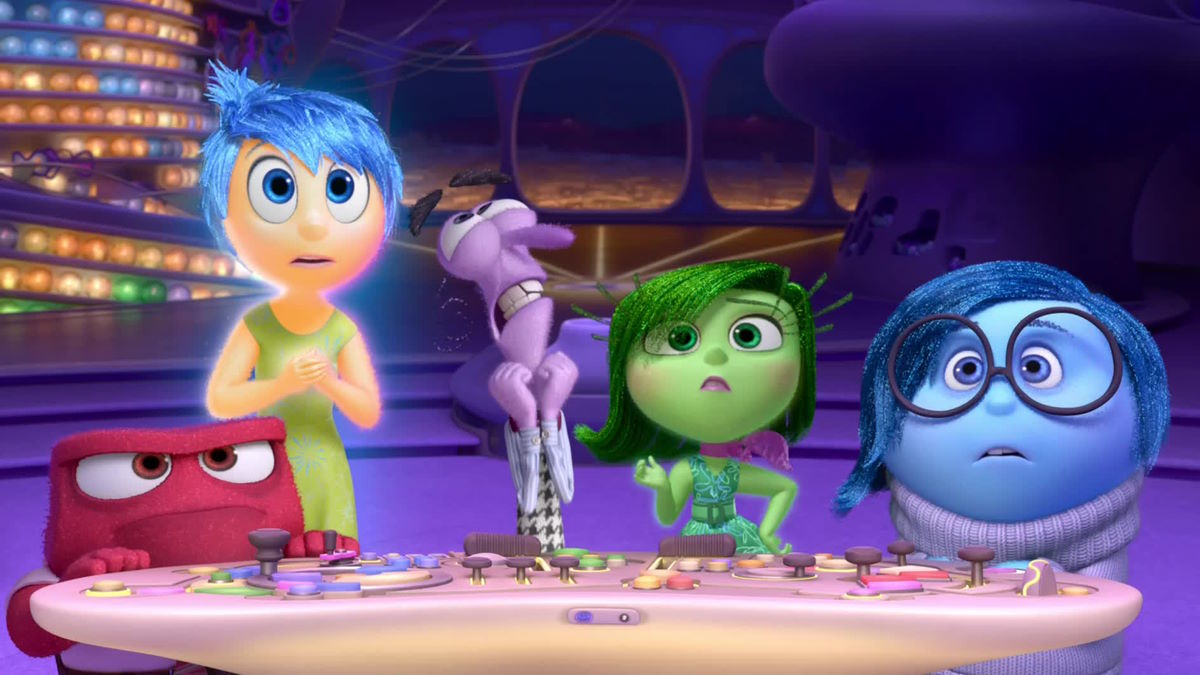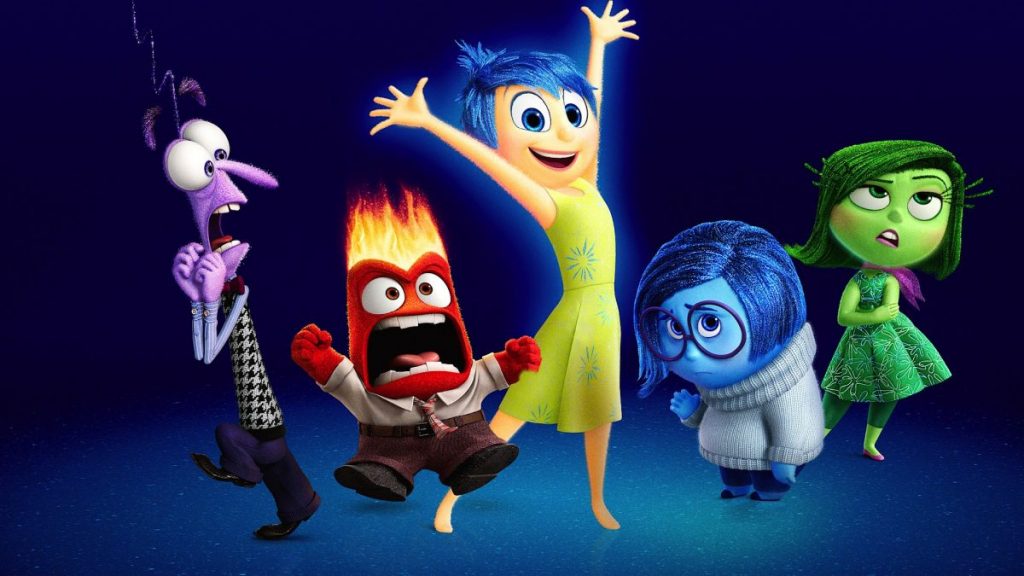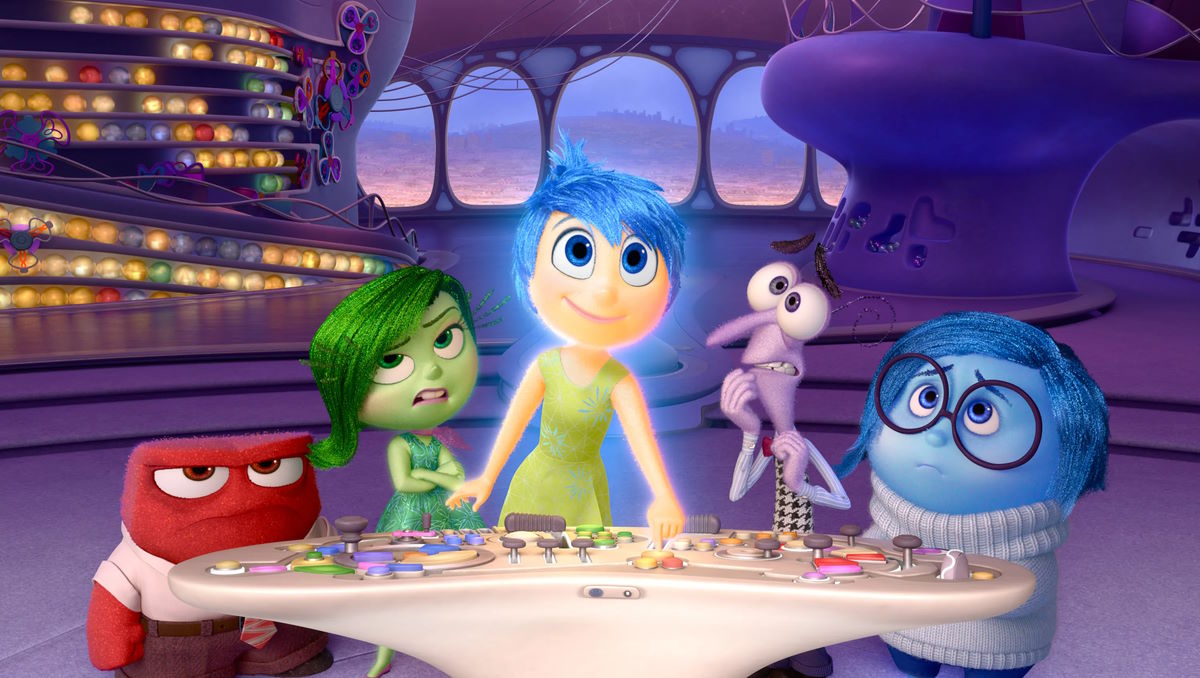“Inside Out” is a 2015 American computer-animated film directed by Pete Docter and produced by Pixar Animation Studios. The movie takes place inside the mind of an 11-year-old girl named Riley, where her emotions – Joy, Sadness, Fear, Anger, and Disgust – operate the control panel of her actions, memories, and personality. The film explores how these emotions work together and how they cope with changes in Riley’s life, including a move to a new city and school.
Coping with change and loss is an important aspect of life that affects everyone at some point. Change and loss can come in many forms, such as the loss of a loved one, the end of a relationship, a job loss, or a major life transition like moving to a new place. Coping with change and loss can be challenging and can lead to a range of emotions, including sadness, anger, and fear. It is important to discuss coping strategies and emotional responses to change and loss, as it can help individuals better navigate these difficult experiences and improve their mental health and well-being. By discussing coping with change and loss, individuals can learn how to identify healthy coping strategies, recognize common emotional responses, and seek support when needed.

Understanding Change and Loss in “Inside Out”
“Inside Out” portrays change and loss as a natural and inevitable part of life. The movie depicts the various changes that occur in the life of the protagonist, Riley, such as moving to a new city and school, as well as the emotions and reactions that arise as a result. The movie also shows how different memories and experiences are stored in Riley’s mind as “core memories,” which shape her personality and influence her emotional responses to different situations.
As Riley copes with these changes, her emotions – Joy, Sadness, Fear, Anger, and Disgust – work together and sometimes against each other, creating both positive and negative outcomes. The movie emphasizes that it is okay to feel sad or experience other negative emotions when going through change and loss, and that these emotions are an important part of the coping process.
Additionally, the movie portrays the importance of social support and communication during times of change and loss. For example, when Riley opens up to her parents about her struggles, it helps her feel heard and understood, and ultimately strengthens her relationships with them.
Overall, the movie’s portrayal of change and loss emphasizes the importance of acknowledging and processing emotions, utilizing healthy coping strategies, and seeking support from others.
In “Inside Out”, the concept of “core memories” is significant because it represents the pivotal moments in one’s life that shape their personality and worldview. These memories are the foundation of an individual’s emotional and mental development, and they play a significant role in how they perceive and respond to the world around them.
The movie portrays “core memories” as being responsible for the creation and maintenance of various personality traits, such as Riley’s love for hockey or her tendency to be optimistic. These memories also act as a guide for her emotions, influencing her reactions to different situations.
Furthermore, the movie suggests that “core memories” can change over time, as new experiences and emotions reshape one’s personality and perspectives. This highlights the importance of being open to new experiences and acknowledging the impact that they can have on one’s life.
Overall, the concept of “core memories” is significant in “Inside Out” because it represents the importance of acknowledging the significant moments in our lives that shape who we are, and recognizing that change and growth are natural and ongoing processes.

Coping Strategies in “Inside Out”
“Inside Out” depicts several coping strategies that individuals can use when dealing with change and loss. Here are some examples:
- Distraction: When Riley is feeling sad or overwhelmed, her emotions try to distract her by creating joyful or funny memories. This strategy can be effective in shifting focus away from negative emotions and towards positive ones.
- Talking to others: Riley’s parents provide a supportive and understanding presence when she is struggling with change and loss. By talking to them about her feelings, she is able to process and work through her emotions.
- Seeking help: At one point in the movie, Riley’s emotions try to fix a situation on their own, but realize they need to seek help from others. This highlights the importance of recognizing when we need assistance and reaching out for help when necessary.
- Expressing emotions: Throughout the movie, it is emphasized that it is important to allow oneself to experience and express emotions, even if they are negative. By doing so, individuals can work through their feelings and move towards healing and growth.
- Finding meaning in the experience: Towards the end of the movie, Riley is able to find meaning in her experiences and learn from them. This highlights the importance of reframing difficult experiences and finding ways to grow and learn from them.
Overall, the movie emphasizes the importance of using healthy coping strategies when dealing with change and loss. By identifying and utilizing these strategies, individuals can better navigate challenging situations and promote their mental health and well-being.

Common Emotional Responses to Change and Loss
When dealing with change and loss, it is common to experience a range of emotions, including sadness, anger, fear, and anxiety. These emotions can be intense and overwhelming, and it is important to allow oneself to experience and process them in a healthy way.
Sadness is a common emotion that arises when dealing with change and loss. It is a natural response to feeling a sense of grief or loss, and it allows individuals to acknowledge and process the reality of the situation. However, it is important to remember that sadness is not a permanent state, and that it is possible to work through these feelings with time and support.
Anger is another common emotion that can arise when dealing with change and loss. It can be a response to feelings of frustration or powerlessness, and it can also be a way of expressing the pain of the loss. While anger can be a difficult emotion to manage, it is important to acknowledge and express it in a healthy way, rather than suppressing or ignoring it.
Fear and anxiety are also common emotions that can arise when dealing with change and loss. These emotions can stem from uncertainty about the future or a sense of vulnerability. It is important to recognize these feelings and seek support in managing them, whether it be through talking to a trusted friend or seeking professional help.
Allowing oneself to experience and process these emotions is important for promoting mental health and well-being. It is natural to feel a range of emotions when dealing with change and loss, and denying or suppressing these feelings can lead to further emotional distress. By acknowledging and processing these emotions in a healthy way, individuals can move towards healing and growth.

Impact of Change and Loss on Mental Health
Change and loss can have a significant impact on an individual’s mental health. Major life changes such as moving, changing jobs, or losing a loved one can lead to feelings of stress, anxiety, and depression. It is important to recognize the impact that these experiences can have on mental health and to seek support if needed.
Depression is a common mental health condition that can arise when dealing with change and loss. It is characterized by persistent feelings of sadness, hopelessness, and a lack of interest or pleasure in activities. Depression can be a serious condition that requires professional treatment.
Anxiety is another common mental health condition that can arise when dealing with change and loss. It can be characterized by persistent worry, fear, and feelings of apprehension. Anxiety can be a normal response to stressful situations, but it can also become overwhelming and interfere with daily life.
It is important to seek support and professional help if these feelings become persistent or interfere with daily functioning. This can include talking to a trusted friend or family member, seeking counseling or therapy, or consulting with a mental health professional. Professional help can provide individuals with the tools and resources they need to manage their emotions and promote their mental health and well-being.
Overall, change and loss can have a significant impact on mental health, and it is important to recognize the signs of depression, anxiety, and other mental health conditions. Seeking support and professional help when needed can help individuals manage their emotions and promote their mental health and well-being.
Conclusion
“Inside Out” provides several key takeaways about coping with change and loss. These include:
- The importance of allowing oneself to experience and process a range of emotions, including sadness, anger, fear, and anxiety.
- The value of healthy coping strategies such as distraction, seeking help, talking to others, expressing emotions, and finding meaning in difficult experiences.
- The significance of core memories and how they shape an individual’s sense of identity and emotional well-being.
- The impact that change and loss can have on mental health, including depression and anxiety, and the importance of seeking support and professional help when needed.
It is important to apply these strategies in real life when dealing with change and loss. This may include reaching out to supportive friends and family, seeking professional help, engaging in self-care activities, and using healthy coping strategies to manage emotions. By taking care of oneself and seeking support when needed, individuals can promote their mental health and well-being, and work towards healing and growth in the face of change and loss.
“Inside Out” offers valuable insights into coping with change and loss, and provides viewers with a hopeful and uplifting message about the importance of emotions and healthy coping strategies. As we continue to navigate the challenges of life, let’s take inspiration from this movie and other uplifting stories in popular culture. By exploring the vast world of movies and TV shows, we can gain new insights, broaden our perspectives, and become better equipped to handle life’s challenges. Let’s continue to seek out these valuable life lessons and apply them to our own lives, so that we can promote our mental health and well-being, and thrive in the face of adversity.
In conclusion, Inside Out teaches us valuable lessons about coping with change and loss, and encourages us to embrace all of our emotions. Let’s take these lessons to heart and apply them in our own lives. And as we continue to navigate through the ups and downs of life, let’s not forget the power of movies and TV shows in helping us find solace and inspiration. So, let’s make a conscious effort to explore the vast world of entertainment for more uplifting stories and valuable life lessons. Together, we can continue to grow and thrive, even in the face of change and loss.

